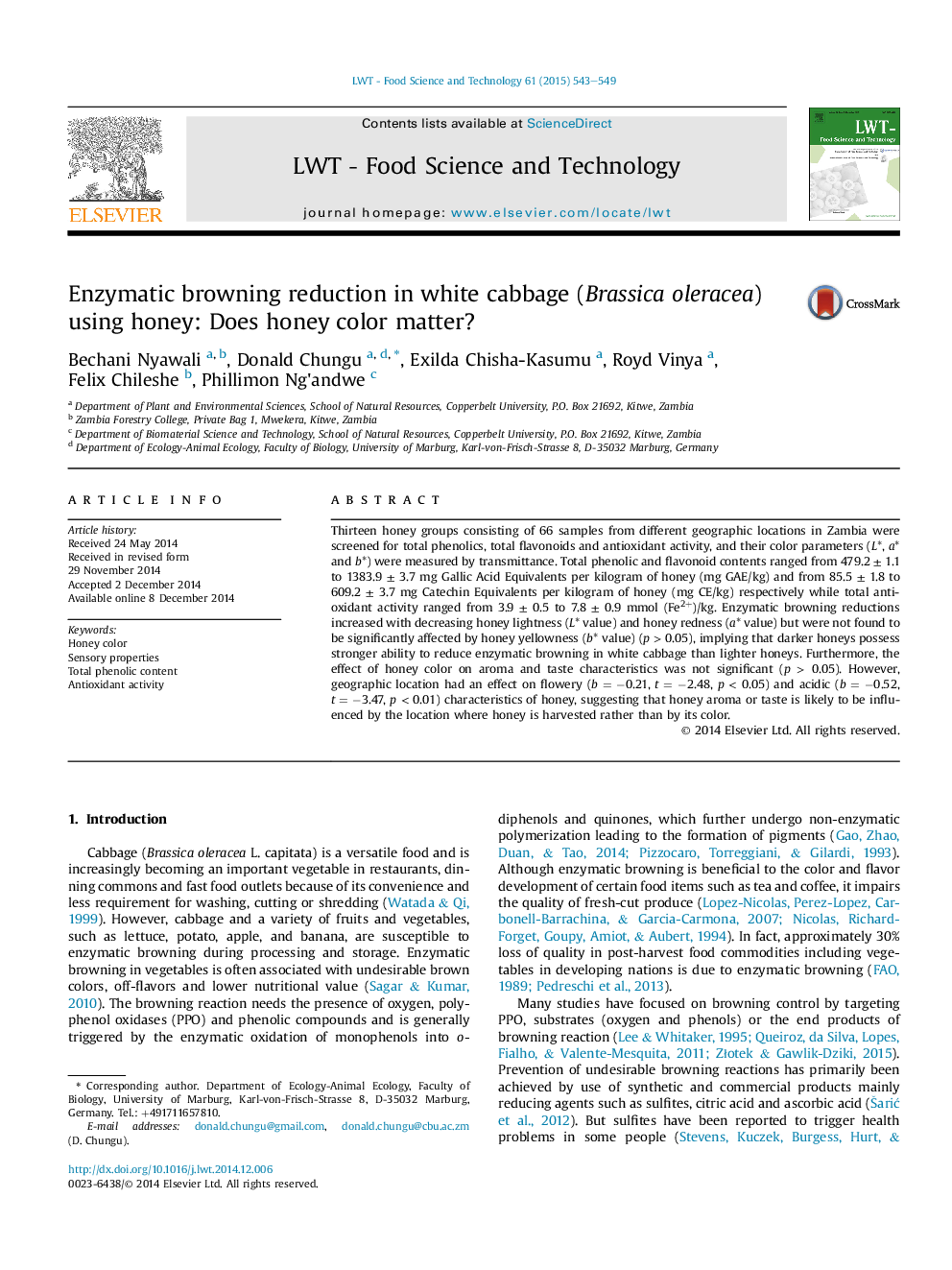| Article ID | Journal | Published Year | Pages | File Type |
|---|---|---|---|---|
| 6401204 | LWT - Food Science and Technology | 2015 | 7 Pages |
â¢Higher contents of phenolics were consistently associated with darker honeys.â¢Darker honeys had stronger ability to reduce enzymatic browning than lighter ones.â¢Sensory characteristics of honey are not controlled by its color.
Thirteen honey groups consisting of 66 samples from different geographic locations in Zambia were screened for total phenolics, total flavonoids and antioxidant activity, and their color parameters (L*, a* and b*) were measured by transmittance. Total phenolic and flavonoid contents ranged from 479.2 ± 1.1 to 1383.9 ± 3.7 mg Gallic Acid Equivalents per kilogram of honey (mg GAE/kg) and from 85.5 ± 1.8 to 609.2 ± 3.7 mg Catechin Equivalents per kilogram of honey (mg CE/kg) respectively while total antioxidant activity ranged from 3.9 ± 0.5 to 7.8 ± 0.9 mmol (Fe2+)/kg. Enzymatic browning reductions increased with decreasing honey lightness (L* value) and honey redness (a* value) but were not found to be significantly affected by honey yellowness (b* value) (p > 0.05), implying that darker honeys possess stronger ability to reduce enzymatic browning in white cabbage than lighter honeys. Furthermore, the effect of honey color on aroma and taste characteristics was not significant (p > 0.05). However, geographic location had an effect on flowery (b = â0.21, t = â2.48, p < 0.05) and acidic (b = â0.52, t = â3.47, p < 0.01) characteristics of honey, suggesting that honey aroma or taste is likely to be influenced by the location where honey is harvested rather than by its color.
